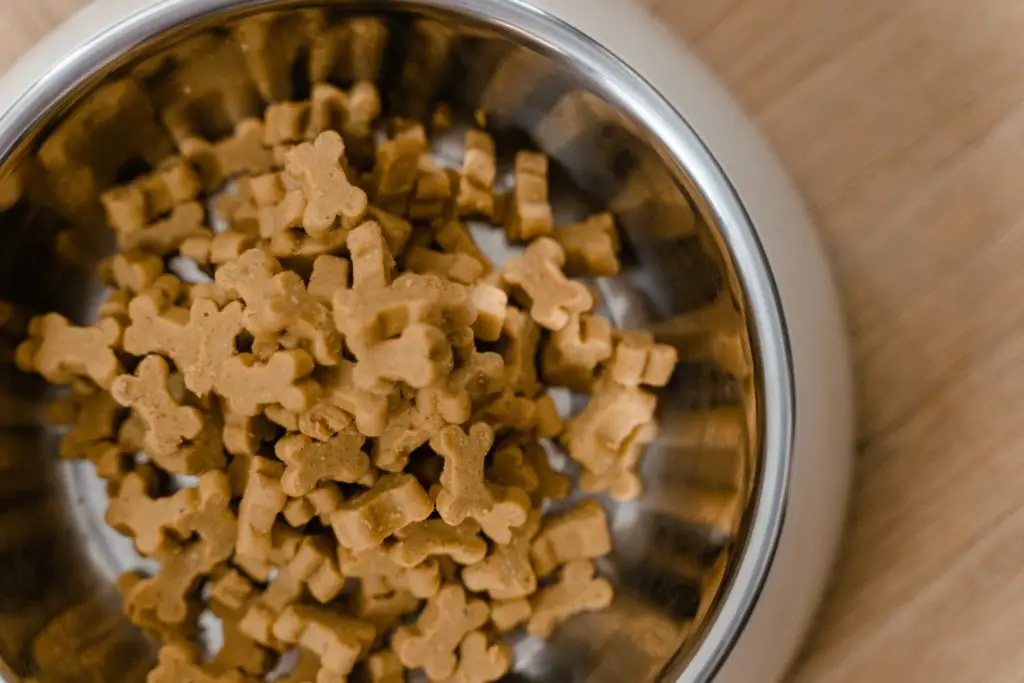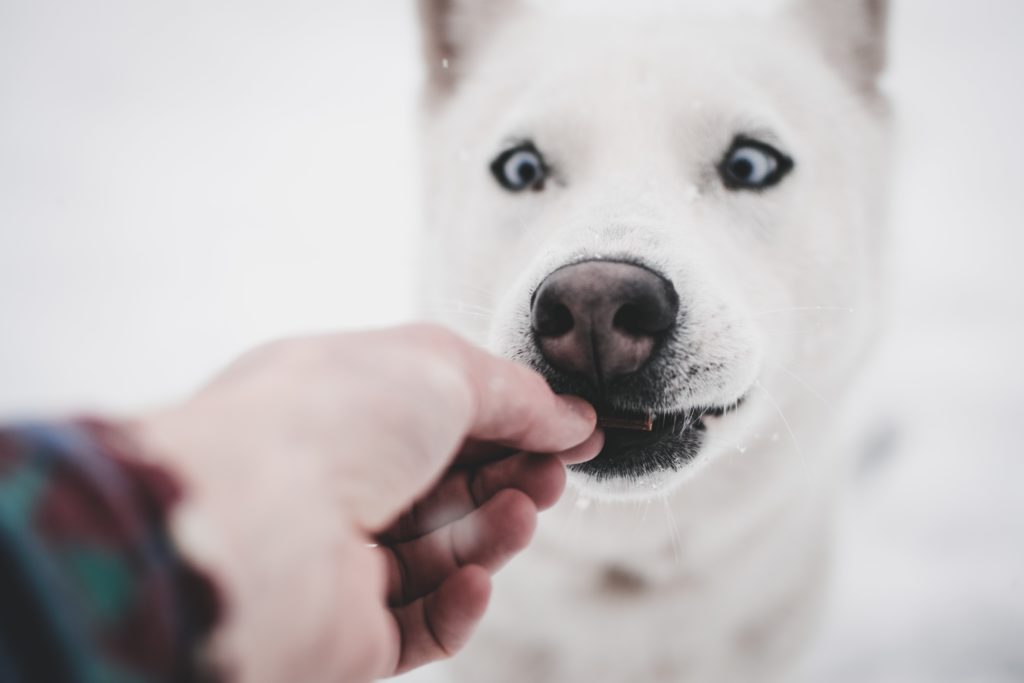Dogs are usually known for their good appetites. When our canine companions either pick at their food or do not eat, it can be quite distressing. Before you jump in and try to figure out how to get your dog to eat, let’s look at the reasons behind their loss of appetite.
This article, How to Get Your Dog to Eat is not a substitute for professional veterinary care. If you suspect your dog is seriously ill, please call your local veterinarian today. If your dog is experiencing diarrhea or vomiting, contact your veterinarian within the first eight hours.
How to Get Your Dog to Eat will cover common reasons dog refuse their meal and tips on how to get your dog eating and increase their appetite.
Dogs, like humans, can have a variety of reasons for losing their appetite. It could be due to emotional issues, behavior issues, or an underlying health concern. The reasons may be very minor for your dog or they could signify something more serious.
Related Articles:
- A Review Of The Top 5 Best Salmon Oils for Dogs
- The Best Canned Dog Food for Dogs with Sensitive Stomachs
- How to Cook Liver for Dogs
- A Review of the 5 Best High Fiber Dog Foods For Anal Gland Problems

How to Get Your Dog to Eat: 10 Reasons Dogs Stop Eating
Your first instinct when your dog does not attempt to eat or even finish their meal is trying to find solutions for how to get your dog to eat. However, they could have a very legitimate reasoning for holding off on food.
- Changes in environment. Some dogs are more sensitive to change than other dogs. A few factors are the dog breed characteristics and early puppy socialization. Changes in their environment due to travel or new locations can lead to loss of appetite in some dogs.
- Nausea. When a dog is in pain, they could be experiencing nausea. Signs that your dog may be nauseous are little to no appetite, excessive drooling, frequent licking, and restlessness. Your dog may eventually vomit.
Dogs can experience nausea for many different conditions such as upset stomach, recent treatments, or a virus. Other reasons that require a visit to your veterinarian are cancer, kidney issues, diabetes, and or an infectious disease. You do not have to diagnose your dog by yourself, it is best to make an appointment with a professional.
- Motion sickness. Dogs can experience motion sickness brought on by travel, just like humans. They might reject a treat at first and not seem like themselves. Usually, after they stop moving, get some exercise and fresh air they are feeling better.
- Unpleasant food. It could be the food itself, check to make sure your dog’s food is not rancid or perhaps the manufacturer changed the formula. It could be as simple as your dog does not like the food.
- Dental issues. When your dog’s tooth or mouth is in pain, they may lose their appetite. It could be a cracked tooth that is giving them trouble. Gum disease can cause swelling and discomfort for your dog. Teeth that are decaying or loose could cause your dog to be in pain and begin drooling.
- Sickness. Your canine companion can get sick too. Each dog’s immune system is different depending on their genetics, diet, and environment. Dogs can get bacterial or viral infections just like humans. Common sickness among canines is urinary tract infection and gastrointestinal illnesses.
- Reaction to preventive treatments and topical medications. One common treatment given to prevent severe disease in puppies is vaccinations. Your dog may feel unwell after receiving a recent vaccination.
Topical medications like corticosteroids that are used to treat skin conditions can cause a dog to be thirsty and lose their appetite. Medications used to prevent and treat fleas, ticks, and heartworms can make a dog feel ill and not want to eat their meal.
- Obstructions. Dogs are known to eat objects that are not digestible such as socks, gloves, or other non-edible household items. It could be a partial or complete blockage in the intestines. In this case, you do what to stop trying how to get your dog to eat. Call your veterinarian and they will be able to make recommendations on how to proceed.
- Stress. A dog that is experiencing excessive stress may stop eating. The stress could be due to physical injury, environmental changes, a loss of another pet in the family, or losing their main caretaker.
- Change in Diet. Any changes to their diet can cause a dog not to eat. They might have a recent diagnosis of food allergies or intolerances that required stopping their usual meals and introducing a new meat source.
Related Articles:
- A Review of the 5 Best Dog Muzzles
- A Review Of The Top 5 Best Dog Clickers
- How to Build an Outdoor Dog Potty Area on Concrete
- How to Cook Marrow Bones for Dogs
The above list does not include all the reasons your dog might not be eating. One additional reason could be they are recovering from a surgery.
It can be challenging at times when trying to figure out what your dog is communicating to you. It could be one of the reasons listed above or simply they miss their human. Once you have ruled out life-threatening issues, find a good solution to how to get your dog to eat.

How to Get Your Dog to Eat: Solutions
Now that you have ruled out any serious illness, it is time to try a few tricks to get your dog eating again. Try these eight tips for how to get your dog to eat.
8 Tips – How to Get Your Dog to Eat
Scheduled Feeding Time. It is best to feed your dog on a schedule. Your dog will feel better when they have an approximate morning mealtime and approximate evening mealtime. Dog’s digestion systems need about 8-12 hours between feedings.
Pick Up the Dish. If you offer your dog food and they do not eat it after 20 minutes, pick it up. If you added toppers such as broth or wet food, you would need to toss it or refrigerate it. Your dog will learn that when food is offered, that is time to eat.
Related Articles:
- A Review of the Top 5 Best Dog Bones For Aggressive Chewers
- How to Get a Picky Dog to Eat
- A Review Of The Top 5 Best Bone Broths for Dogs
- How to Keep Your House from Smelling like Dog
Cut Back on Treats. Keeping track of the amount of treats we give our dog between meals is important. Not only do treats sate their appetite, but they also mess with their glucose/insulin levels. If you know that you will be training your dog, set aside food for them, this will help with not overfeeding your dog as well.
Exercise. Engaging your dog in routine exercise will help them have an appetite. They can also release stress during exercise and acquaint themselves with any new environment changes.
Add Wet Toppers. Warm chicken broth is a favorite for dogs. Chose homemade broth or broth without added salt and preservatives. Beef broth, tuna juice, or sardine juice are all fragrant and smelly toppers that will get your dog’s attention. Pureed pumpkin and squash are good toppers.
Safe Meal Location. If you have multiple dogs in your living space, consider feeding your dogs in their crates. It can be difficult to catch all the communication that is being expressed between dogs. For whatever reason, your dog might need a safer place to take their meals.
Enrichment Activity. Chose this solution if it appears your dog is healthy but needs encouragement to move or needs attention. One low-key enrichment activity is playing scent games. Just that little bit of food used in the games could get their appetite going again. A quiet puzzle game might also get their brain engaged.
Hand Feed Your Dog. This solution is helpful if you recently lost a pet in your house, and the dogs were used to eating together. Newly adopted dogs might feel safe if you hand feed them after first bringing them home.
Related Posts:
- Rules of How to Walk Your Dog
- How to Train Your Dog to Walk on a Leash
- The Top 5 Basic Dog Training Commands
- How to Obedience Train Your Dog
- How to Clicker Train Your Dog
Remember it is okay if your dog eats slower or less right after a surgery. They might be recovering from oral surgery; in which case they will be eating soft foods for a while.
After trying many of the solutions above and your dog still won’t eat, it’s time to call your local veterinarian. Your dog needs to be examined by a professional to see what underlying condition might be causing the lack of appetite.
How to Get Your Dog to Eat: When to Call a Professional
Know when to call your veterinarian about your beloved canine. If your dog has diarrhea, vomiting, increased weakness, and lethargy it’s time to get professional advice.
Let them know the date and time of the last meal your dog ate. They will want to know approximately how much water they are drinking and the last time they eliminated.

How to Get Your Dog to Eat
Dog’s will not starve without food for 24 hours. In fact, they might be resetting their system. Give your dog time and patience. Serve up warm broth (sodium-free) and encourage them to eat.
Movement is important for your dog too. Keep exercise short for small puppies and senior dogs. Even just walking around your home and sniffing will be an enriching activity for your dog.
In the case of a scared dog, place their food dish in a safe location away from other pets. Remember to pick up the dish with any uneaten food. If it will be helpful, you can hand feed your dog until they are able to eat on their own.
Relevant Articles:
- Ultimate Guide: How To Take Care Of A Puppy
- Ultimate Guide: How To Take Care Of A Dog
- Ultimate Guide: How To Take Care Of A Senior Dog
- The Benefits of Owning a Dog
- Top 12 Tips for First Time Dog Owners
- How to Train a Dog
Please read our Legal Disclaimer

